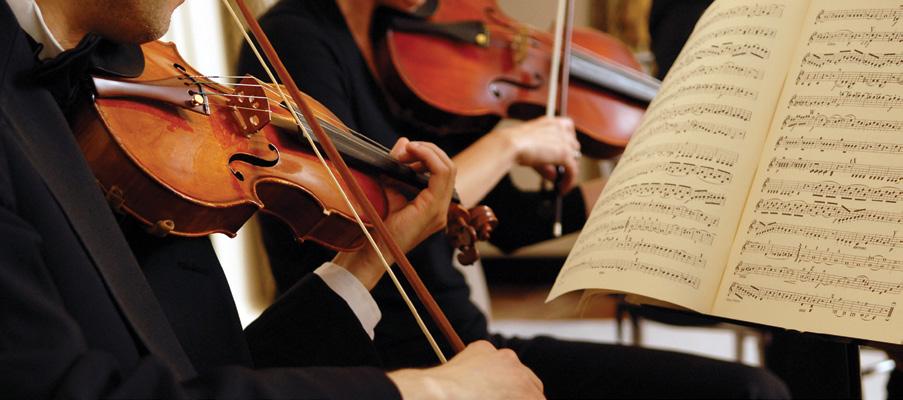
5 minute read
The Music of Jean Sibelius
from Osher Summer 2023
8 Fridays, June 30–August 25 (no meeting August 4), 10am–12pm
The musical compositions of Jean Sibelius have long been a staple of symphonic repertory and a favorite of audiences throughout the 20th and 21st centuries. Born in 1865, Sibelius is considered by many to be Finland’s most important composer. Coming at the tail end of the long 19th century, he is especially known for a musical style that continues to develop the Romantic tradition, all the while exploring nationalistic, Finnish themes from sources such as the Kalevala. In this course, we explore Sibelius’s most important musical works, such as the famous violin concerto, the symphonies, piano pieces, songs, and the tone poems, including the Lemminkäinen Suite, Tapiola , and Finlandia
This course will be recorded. Students will have access to videos for the duration of the course.
REG# 392093 | INSTRUCTOR: Ryan Shiotsuki
BASIC MEMBER FEE: $135 | PLUS MEMBER FEE: $40
REMOTE: Zoom information is emailed to students two days before the course begins..
Great Violinists of Classical Music {New Course}
8 Fridays, June 30–August 25 (no meeting August 4), 1–3pm
Violinists are some of the most important and recognizable instrumentalists in classical music, whether as soloists, chamber musicians, or members of the symphony orchestra. From the earliest Italian masters, to the devilish virtuosity of Paganini, to modern musicians like Itzhak Perlman and Sarah Chang, violinists have remained popular performers throughout numerous eras. In this course, we explore some of the most important solo violinists who have perfected the craft of the instrument of their repertory throughout the years of changing performance traditions.
This course will be recorded. Students will have access to videos for the duration of the course.
REG# 392169 | INSTRUCTOR: Ryan Shiotsuki
BASIC MEMBER FEE: $135 | PLUS MEMBER FEE: $40
REMOTE: Zoom information is emailed to students two days before the course begins.
Buildings that Define American Cities, Part IV {New Course}
6 Mondays, July 10–August 14, 1–3pm
Every city has a particular feel about it, defined by its architecture, demographics, geography, climate, and the people and cultures that have shaped the city from its founding to its current status. From historical to contemporary structures, this course explores the iconic structures that identify various American cities and how they came to be. Discussion of architectural styles and the sociopolitical context in which these buildings were created lie beneath the developmental time frames in the study of each city included. Cities covered include: Louisville, Pittsburgh, Phoenix/Scottsdale, Cleveland, Dallas/ Fort Worth, and Portland.
This course will be recorded. Students will have access to videos for the duration of the course.
REG# 392477 | INSTRUCTOR: Eleanor Schrader
BASIC MEMBER FEE: $115 | PLUS MEMBER FEE: $34
REMOTE: Zoom information is emailed to students two days before the course begins.
The Map of American Music

8 Wednesdays, July 12–September 6 (no meeting August 9); 1–3:15pm
Jazz, Blues, Rock, Pop, Folk, Country, Hip Hop, Rap and many more kinds of music all evolved in the USA. Some of these genres have common roots stemming from geographic location, ethnic populations, personal history, wars, and immigration (by choice and not). They progressed along different paths, but as they grew up they influenced one another, comingled, sometimes finding their common ground and giving rise to yet newer and different styles or genres. Through audio, video, commentary, demonstration and personal recollection; we explore the map of American music through a wide-angle lens, connecting the dots of its musical history and development.
This course will be recorded. Students will have access to videos for the duration of the course.
REG# 392379 | INSTRUCTOR: Andrew Muson
BASIC MEMBER FEE: $135 | PLUS MEMBER FEE: $40
REMOTE: Zoom information is emailed to students two days before the course begins.
Meet Your Cousins: The Apes, Monkeys, and Lemurs
{New Course}
2 Tuesdays, August 1–8, 10am–12pm
Primates are a group of mammals that include the apes, monkeys, lemurs, and humans. Apes, monkeys, and lemurs share 96 to 99 percent of our DNA, and are in danger of extinction. In this course, we take a virtual tour to Madagascar and Southeast Asia to meet the lovable lemurs; then on to Africa, Asia, and South America to meet old- and new-world monkeys—the baboons of South Africa’s Cape Peninsula, the langurs of India’s Gir Forest, and the pygmy marmosets of the Amazon. We also explore the habitats of the lesser apes and the great apes—the swinging (and screaming) gibbons, the docile orangutans and gorillas, the brainy chimpanzees, and the “make love, not war" bonobos. This course uses the Hybrid (Flexible) format which allows students to participate remotely and/or in the classroom. This course will be recorded. Students will have access to videos for the duration of the course.
REG# 392370 | INSTRUCTOR: Sharon Boorstin
BASIC MEMBER FEE: $85 | PLUS MEMBER FEE: $15
IN-PERSON: UCLA Extension Gayley Center, Room 114.
REMOTE: Zoom information is emailed to students two days before the course begins.
Become a Theatrical Detective: Stanislavski's Active Analysis {New Course}
6 Tuesdays, August 1–September 5, 6:30–8:30pm
Konstantin Stanislavski was known as an outstanding character actor and theatre director. But he is most known for his system of actor training, preparation, and rehearsal technique, in which he subjected his acting and direction to a rigorous process of artistic self-analysis and reflection. In his later work, Stanislavski focused more intently on the underlying patterns of dramatic conflict and developed a rehearsal technique that he called "active analysis," in which actors would improvise conflictual dynamics. Actors, directors, and dramaturgs utilize this multipronged approach to unlock action and events in dramatic narrative, but it is also great fun for curious enthusiasts of dramatic structure and literature. In this course, we learn cognitive event analysis to evaluate a writer’s underlying intentions with the short stories, “The Last Leaf” by O. Henry and “The Reunion” by Maya Angelou. Finally, we discover the dramatic heart of Anton Chekov’s master work, The Seagull. By the end of the class, students keen on acting will have the opportunity to experiment with a simple guided improvisatory technique using Stanislavski’s physical analysis.
REG# 393093 | INSTRUCTOR: Thomas Trudgeon
BASIC MEMBER FEE: $115 | PLUS MEMBER FEE: $34
IN-PERSON: UCLA Extension Gayley Center, Room 121AB.
Paris of the Impressionists: The Sites and Locales of the Masterworks of Impressionism {UCLAxOpen New

Course}
6 Thursdays, August 10–September 14; 1–3pm
The art of the Impressionists explored the contemporary world in which they lived and worked. Featuring the cafes and nightclubs of Montmartre—as well as racetracks, train stations, boulevards, parks, operas, and ballet—the Impressionists documented everyday life in the modern city of Paris. Taking advantage of the newly invented paint tubes, they were able to paint outside while looking directly at subjects rather than working in a studio from sketches. The advent of photography influenced them to focus on light, color, cropping, movement, and spontaneity. In this course, we armchair travel around Paris, exploring their paintings of Paris and the sites that inspired them.
This course will be recorded. Students will have access to videos for the duration of the course.
REG# 392325 |
INSTRUCTOR: Katherine Zoraster
FEE: Free for all. OLLI Membership is not required.
REMOTE: Zoom information is emailed to students two days before the course begins.





